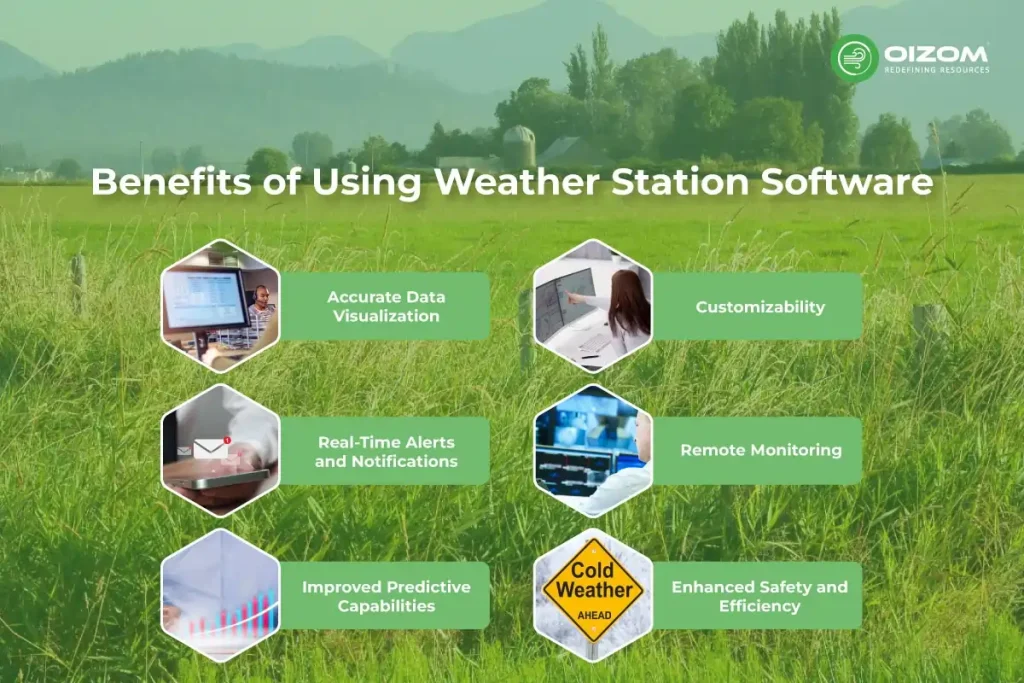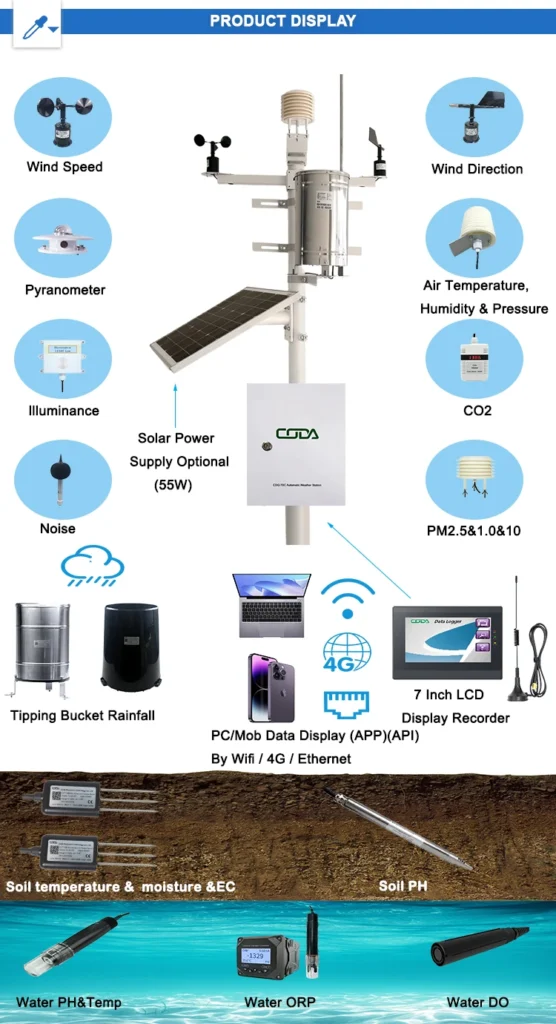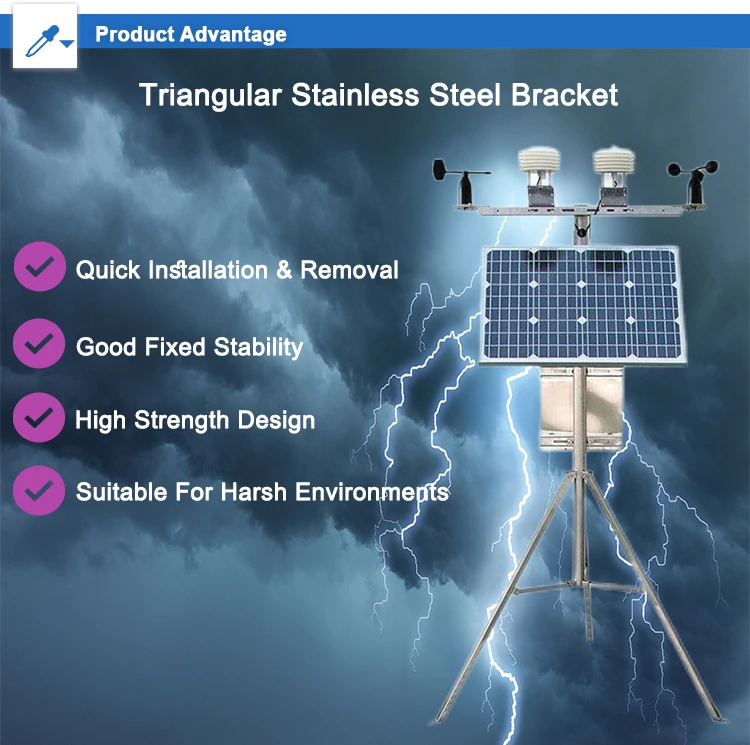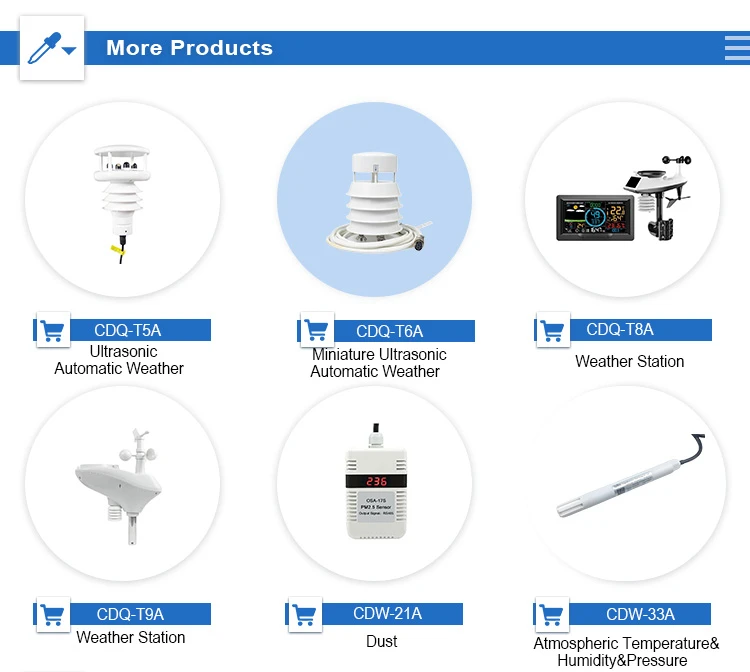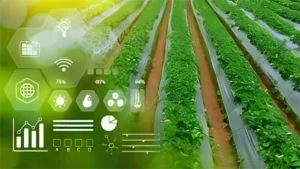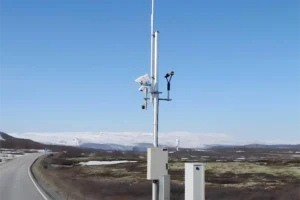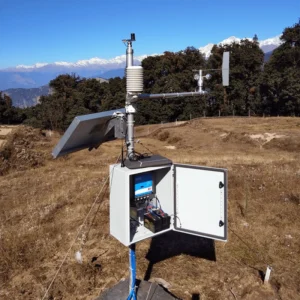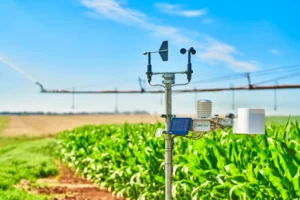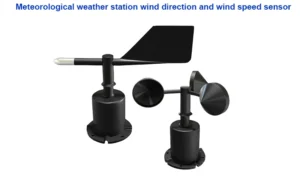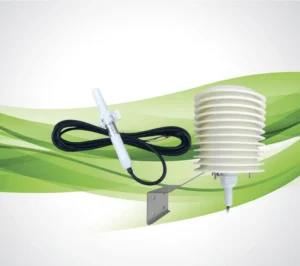Automated Weather Stations: Workings and Benefits
What Is Automatic Weather Station ? –Automated Weather Stations (AWS) are modern systems. They have advanced sensors and tools to collect weather data. These stations serve as a vital resource for weather forecasting, climate studies, agriculture, and numerous other sectors.
This article looks at how Automated Weather Stations work and shows the benefits they offer.
1. The Basic Components of an Automated Weather Station
An Automated Weather Station (AWS) has several key parts that work together. They collect accurate and reliable weather data. These parts include:
Weather Sensors:
The station has many sensors. They measure temperature, humidity, wind speed, wind direction, rainfall, air pressure, and sunlight. These sensors notice changes in the weather and turn them into electrical signals.
Data Logger:
The data logger’s role is to record and store the measurements collected from the weather sensors. It functions as the AWS’s central processing unit, handling and organizing the gathered data.
An AWS has a communication system. This system sends data to a central server or shows it in real-time. It can use a wired or wireless network, satellite communication, or a cellular network.
Power Source:
The AWS needs a steady power supply to work. Solar panels, batteries, or both can provide this power. This ensures it runs smoothly, even in remote areas.
2. How an Automated Weather Station Works?
Once you install AWS, it begins the process of collecting weather data. Here is a step-by-step breakdown of how an Automated Weather Station works:
– Sensor Measurements:
The weather sensors keep track of different weather conditions. For example, the temperature sensor detects changes in temperature. The anemometer measures wind speed and direction.
– Data Conversion:
The sensors change the weather conditions into electrical signals. Then, these signals are sent to the data logger.
– Data Logging:
The data logger receives the electrical signals from the weather sensors and processes them. It logs the measurements along with the date and time of each reading.
-Data storage:
The data logger saves the processed data in its memory. It is important to have enough storage space for a lot of data.
– Data Transmission:
The weather data is sent to a central server or directly to users. You can do this using different communication systems, based on what is available.
-Data Analysis and Display:
Once the team receives the data, they analyze it to find patterns and trends. Meteorologists, researchers, and agriculture experts can access this information through visual displays or software.
3. Benefits of Automated Weather Stations
Automated Weather Stations offer many advantages compared to traditional weather monitoring methods. Let’s look at some of these benefits:
– Accuracy and Precision:
AWS uses advanced sensors that give accurate and reliable weather measurements. This helps with precise weather forecasting. Accurate forecasts are important for many areas, like agriculture, aviation, and disaster management.
Real-time Data:
AWS provides users with the latest weather information. This helps them track current conditions and make smart choices. They can also respond quickly. This real-time data is useful for important tasks like air traffic control, storm tracking, and environmental monitoring.
– Cost-effectiveness:
The initial costs of setting up an AWS may be higher than regular weather stations. However, they save money over time. Automated systems need little maintenance, lower labor costs, and remove the need for manual data logging.
– Remote Monitoring:
Automated Weather Stations can be set up in remote or hard-to-reach places. They work on their own without human help. These stations give important weather information from areas where getting accurate data is usually difficult.
You can easily connect AWS data with other apps and platforms. This helps fields like agriculture, energy, transportation, and city planning use weather data. Integrated data improves decision-making and increases overall efficiency.
Conclusion
Automated Weather Stations (AWS) are key for weather monitoring and forecasting today. They use advanced sensors and data loggers. These stations give accurate and real-time weather information.
The benefits of using AWS are better accuracy, lower costs, remote monitoring, and easy integration with other systems. As technology improves, AWS will enhance weather observation. This will help create a safer and more productive society.
Coda Sensors can also foster research that is more useful and influential in society at large.
Hunan Coda Electronic Tech Co., Ltd focuses on improving operations and expanding capacity. We have a strong position in key domestic markets. This will help us grow in the long term, benefiting both our customers and investors.
